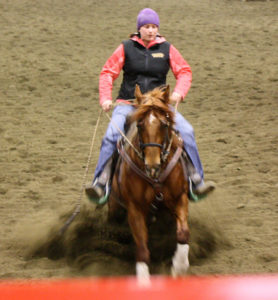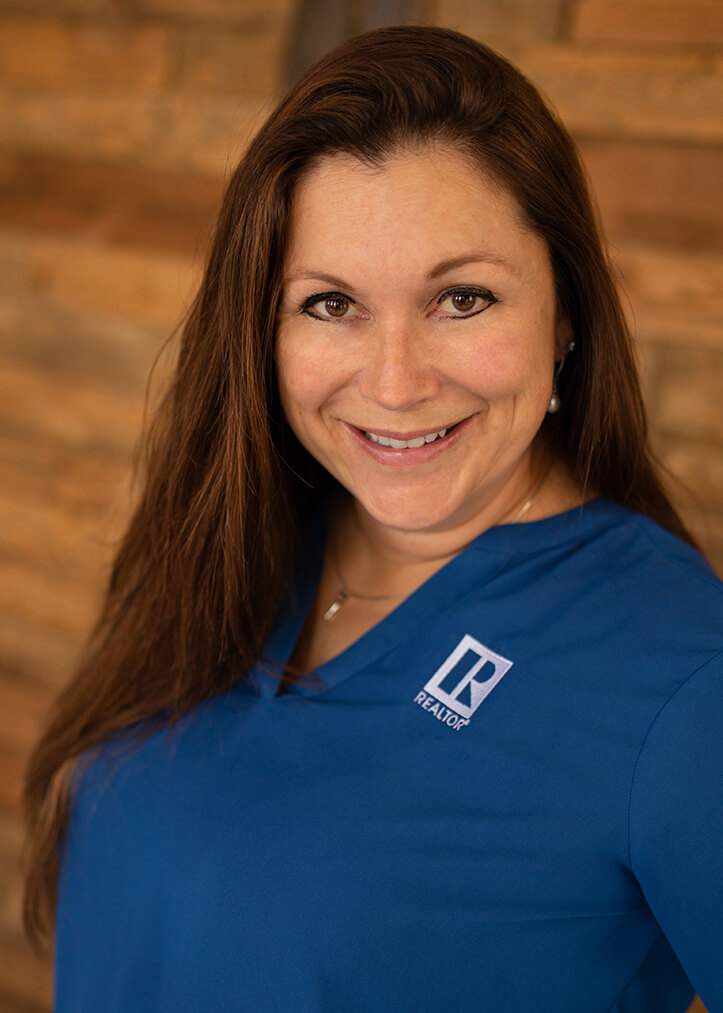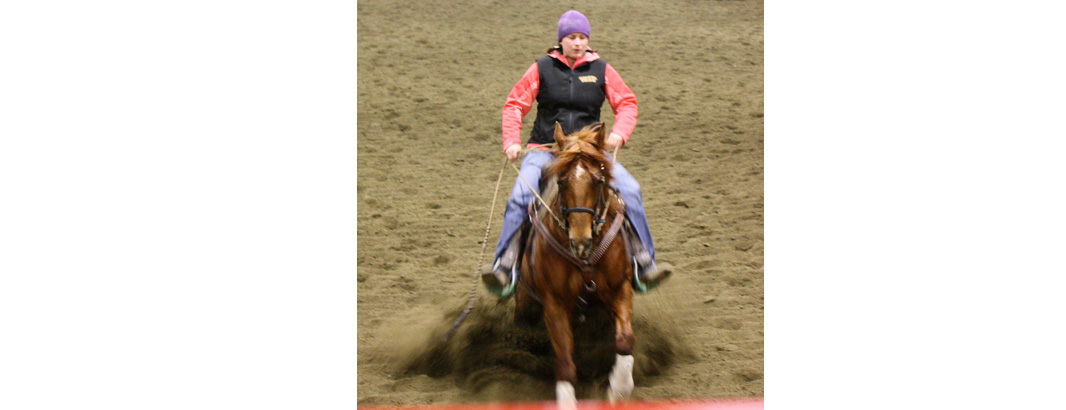by Allison Trimble

A square sliding stop is one of the most exciting maneuvers performed by reining and reined cow horses. There are a number of components that go into teaching a horse this maneuver that are combined with a horse’s natural ability. There are also many rules; points are awarded or deducted for proper execution and there are penalties associated with the maneuver while showing. The maneuver begins as the horse starts the rundown for the stop; the horse is judged on rate and speed of the approach to the stop, or rundown.
In the warm-up pen, or while schooling before the show, horses will be lined along the short end of the arena and can be seen running up and down the pen, and sliding into the fence. This is a practice called “fencing,” and is also a large part of training at home. It may seem like working on the dirt slinging stop is the most important part of training this maneuver, but in fact, once a horse has a good basis for the stop, schooling and maintaining the horse’s rundown can be the crucial factor.
For a horse to perform their best stop, they must be accelerating as they are asked to stop. The stride before the stop must be the fastest of the rundown. The visual I have in my head is of an airplane taking off, gaining speed on the runway, elevating and taking off. A sliding stop is actually quite similar. The horse must be light and elevated on his front end and in effect “running up hill.”
Another component of a square sliding stop is that it is square, meaning straight. A straight stop only comes from a straight rundown. Horses can tend to lean towards one wall or run crooked down the pen. Fencing allows the rider to work exclusively on the rundown without complicating it with the stop. One of the most common ways to work on a horse that isn’t running straight is to simply change the target point on the fence away from the direction the horse is leaning and give a new angle during the rundown. A horse is a creature of habit and it doesn’t take long for them to learn that sliding stops occur just past the end markers, or just past the center marker. They know, as they are asked to accelerate, that it is to precede a stop so they begin to anticipate.
This anticipation presents itself in two ways: the horse either accelerates way too soon and too fast, or they start slowing down before the stop. The horse that takes off in his rundown may have a huge stop, but the “eye appeal” portion of the judging is detracted. The horse that starts setting up too soon, is one that is running on his front end with a shorter stride. Those elements are not the makings for a good sliding stop.
Fencing allows the rider to teach the horse to run as though he is running all the way to the fence every time, with the intention that when they are asked to stop they are a horse that is running true in that stride. If the horse is one that wants to run off in the rundown, this is a way to let him relax and to change things up so he waits for his cues and tunes into the rider.
A couple of tips on fencing:
- Do not say “whoa” to your horse at the fence. He will learn to use his hind end to get stopped in time. Remember, you are not working on stopping, you are working on going.
- Balance yourself as you go into the fence and be sure you are not tensing your body or grabbing your horse with your legs as he goes to the fence.
- Above all, take your time once you get to the fence. Remember that this is the place you want your horse to want to be. The fence is his release, so make it a happy place for him.
With consistent practice, and an understanding of its important components, you can train a beautiful sliding stop.
Published April 2014 Issue

Allison Trimble is a Realtor® specializing in equestrian properties, farm and ranch properties, and residential real estate. She’s a former horse trainer, and a current owner, breeder, and non-pro competitor in cow horse and reining events. For many years, Allison wrote a monthly column for The Northwest Horse Source.
Learn more at www.allisonblakerealestate.com






